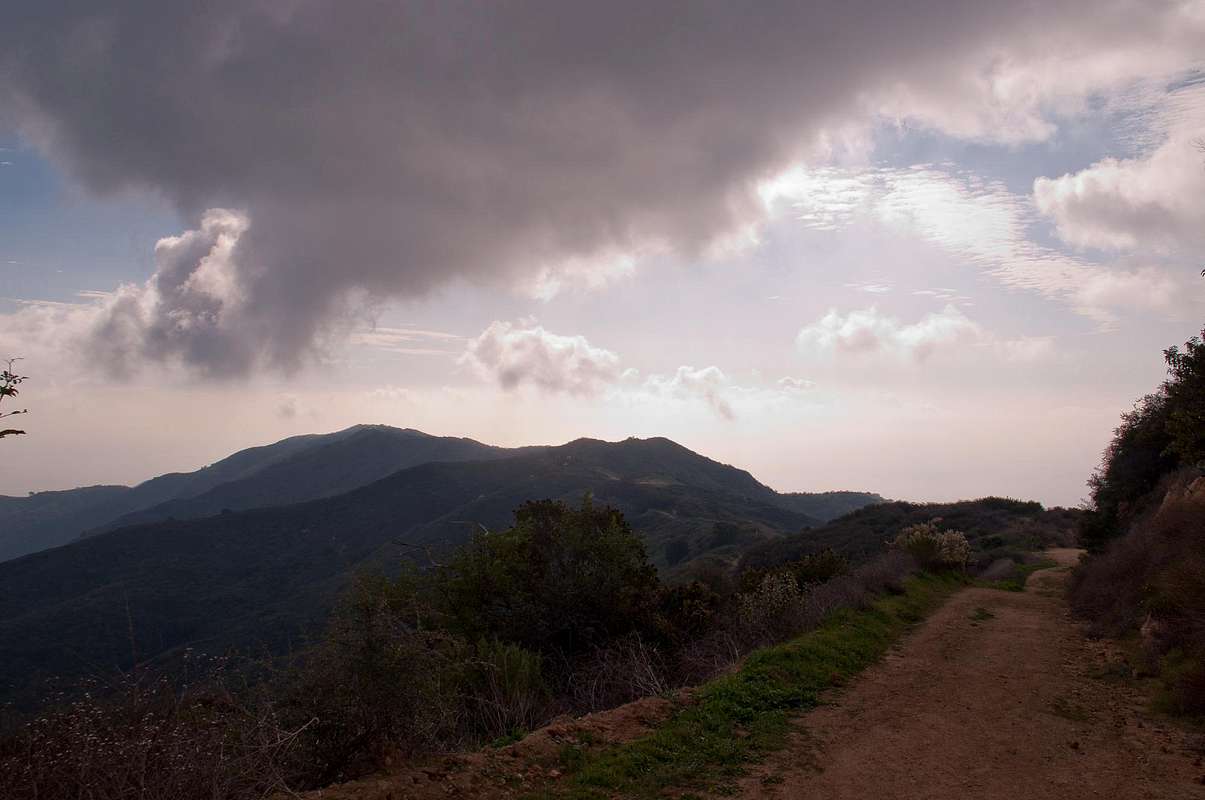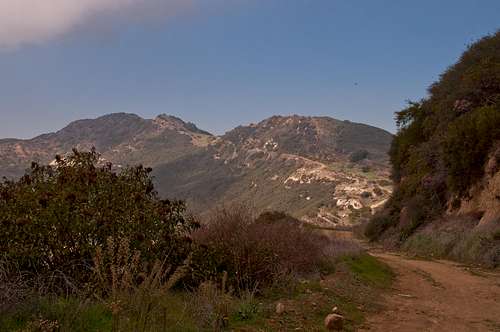-
 11666 Hits
11666 Hits
-
 85.36% Score
85.36% Score
-
 20 Votes
20 Votes
|
|
Mountain/Rock |
|---|---|
|
|
34.06251°N / 118.71898°W |
|
|
Hiking |
|
|
Winter |
|
|
1844 ft / 562 m |
|
|
Overview
Mesa Peak is a small peak in the Santa Monica Mountains of Southern California. It sits at the head of Puerca Canyon (“Pig Canyon”) with Corral Canyon to the west and Malibu Canyon to the east. Although not difficult to reach and not a difficult peak by any standard, the hike to its summit is relatively popular among locals. Its allure comes from the geological beauty of the surrounding area with sandstone pinnacles belonging to the Sespe formation and countless tellurite fossils embedded in the soft sandstone.
The Sespe formation is a non-marine formation in southern and south central California and consists primarily of sandstone and conglomerate laid down in flood plains between 40-24 million years ago (Upper Eocene to end of Oligocene). Rocks of the Sespe formation are easily identified by their often distinctive reddish-brown color. As many of its sandstones are more resistant to erosion than many other regional sedimentary rocks, it often forms dramatic rocky outcrops and ridgelines.
The views along the various ways to the summit are magnificent, especially to the Pacific Ocean to the south. To the east one can see Saddle Peak and Castro Peak dominates in the west. Both peaks can be easily identified by the towers that “adorn” their summits. In fact, there is a small solar-powered installation on Mesa Peak itself.
Getting There
There are mainly three “routes” to reach the top:
From Corral Canyon: From the Pacific Coast Highway take Corral Canyon Road into Solstice Canyon and follow this winding road for about 5.5 miles to the end. The last few hundred yards are on dirt. You are at the Corral Canyon trailhead of the Backbone Trail of the Santa Monica Mountains. From the parking lot a trail leads over and through amazing sandstone formations in about 0.4 miles to the Mesa Peak Motorway. Continue on this motorway for about 2.6 miles to the intersection with the Puerca Motorway. Take this motorway for about 0.5 miles south and follow a use trail through low bushes to the summit.
From Malibu Canyon:From the Pacific Coast Highway, turn into Malibu Canyon Road (at Pepperdine University) and follow this scenic road for about 4.5 miles to a dirt parking lot on the west side of the road. You can also get there from the north via the 101 Freeway and Las Virgenes Canyon road (also after about 4.5 miles). If you park there you have to pay $10 for day-parking. There is also a small turn-out on the intersection of Malibu Canyon Road and Piuma Road, where you don’t have to pay anything. However, there is space for only a few cars. From there you have to walk a few minutes south along the road to the trailhead. From the trailhead take a narrow trail (which starts behind the restroom) uphill. This trail intersects after a few ups and downs the Mesa Peak Motorway. At the intersection turn left and continue on the motorway rather steeply up the ridge and further to the intersection with the Puerca Motorway (about 2.5 miles from trailhead). From there take this motorway for about 0.5 miles south and follow a use trail through low bushes to the summit.
From Pacific Coast Highway: You can also reach the summit directly from the ocean along the Pacific Coast Highway (from Corral Canyon Park). Park your car shortly east of Corral Canyon road and you will notice a ridge (west of Puerca Canyon). From the highway find trails that lead in switchbacks to the top of the ridge, where you intersect shortly the Puerca Motorway. Follow this motorway north to the summit. This route is about 8 miles roundtrip with almost 2,000 feet of elevation gain.
Red Tape
There is no Red Tape to hike to Mesa Peak.
Accomodations
There is numerous accomodations in Malibu and campsites in Malibu Creek State Park.
Malibu Creek State Park




